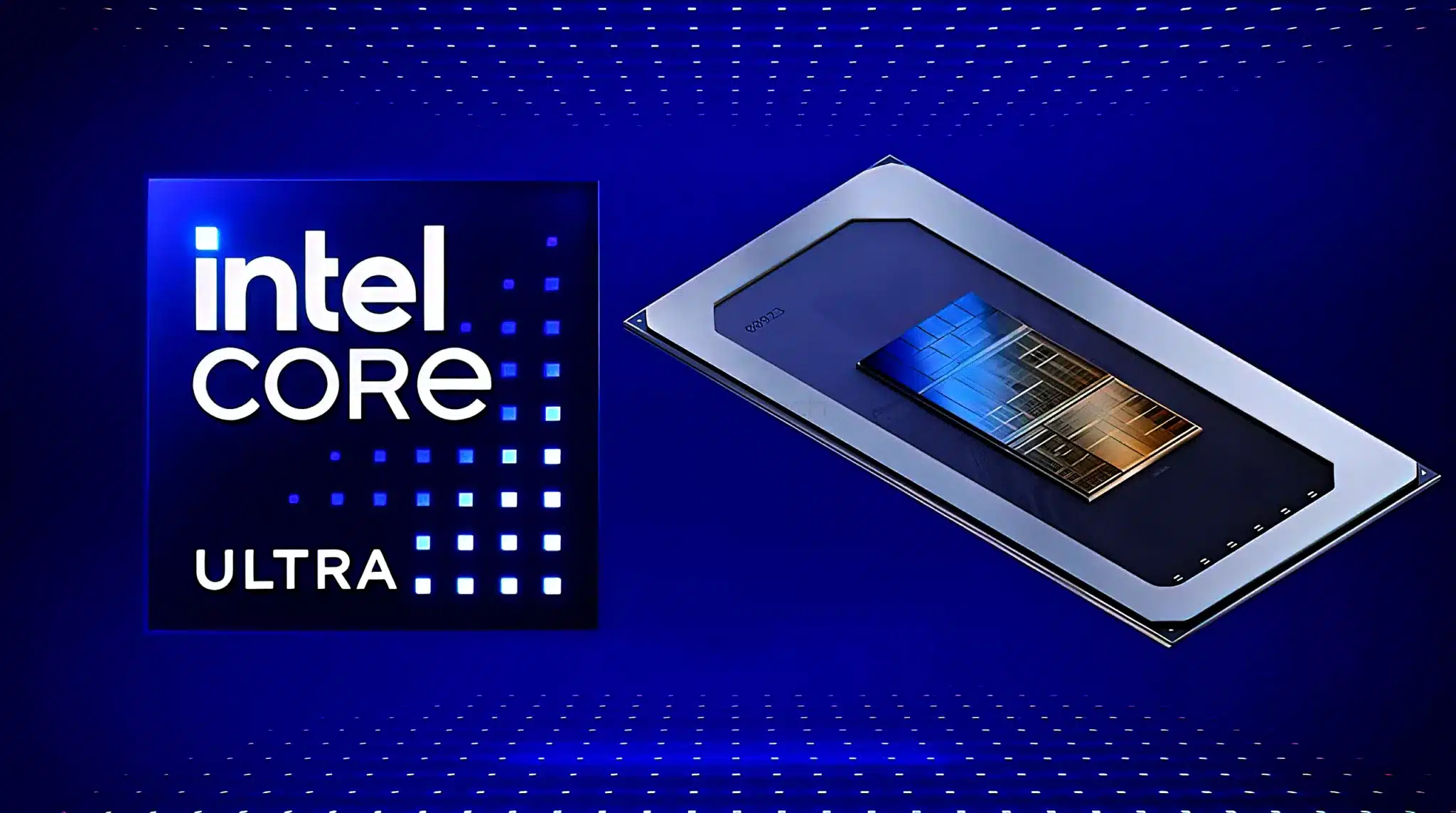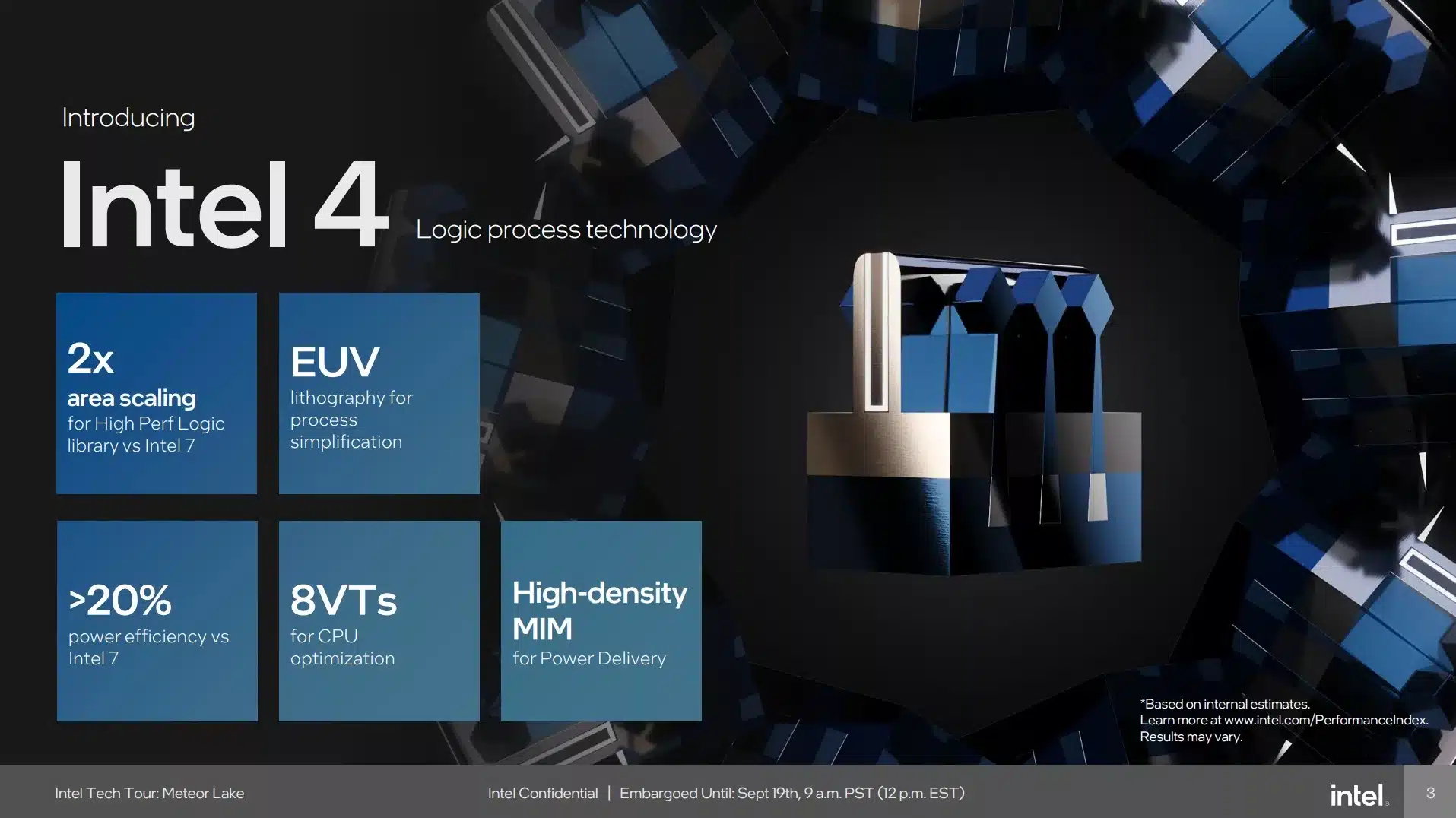Intel has officially unveiled Core Ultra. The upcoming notebook processors not only have new names, but are also said to be a giant leap into the future
Intel’s Innovation 2023 in-house exhibition has just taken place. The manufacturer showed a lot at the event, but there were no really exciting announcements for gamers – or so one would think.
Because the new Meteor Lake notebook processors, now also known as Intel Core Ultra, could soon become relevant for desktop users as well – a look into the future.
Intel even talks about the largest architecture change in 40 years.
And that almost makes up for the desktop CPUs and graphics cards that shine with absence.
First notebooks with Meteor Lake CPUs are expected to be released in December 2023.
We’re going to take a closer look at the four biggest new features of Meteor Lake, and explain how the new naming scheme Intel is giving its processors works to celebrate.
Table of Contents
Upscaling and ray tracing for the CPU
We’ll start with the graphics unit, which is rather neglected in processors. Sure, it gets a bit better every year, but is never really in the limelight, especially in comparison to dedicated graphics cards
Intel doesn’t only want to double the efficiency of the GPU and increase the performance, which hasn’t been quantified yet. It also plans to add features that were previously reserved for Arc cards released in 2022.
In detail, these include hardware-based ray tracing or AI upscaling with XeSS, Intel’s version of Nvidia’s DLSS.
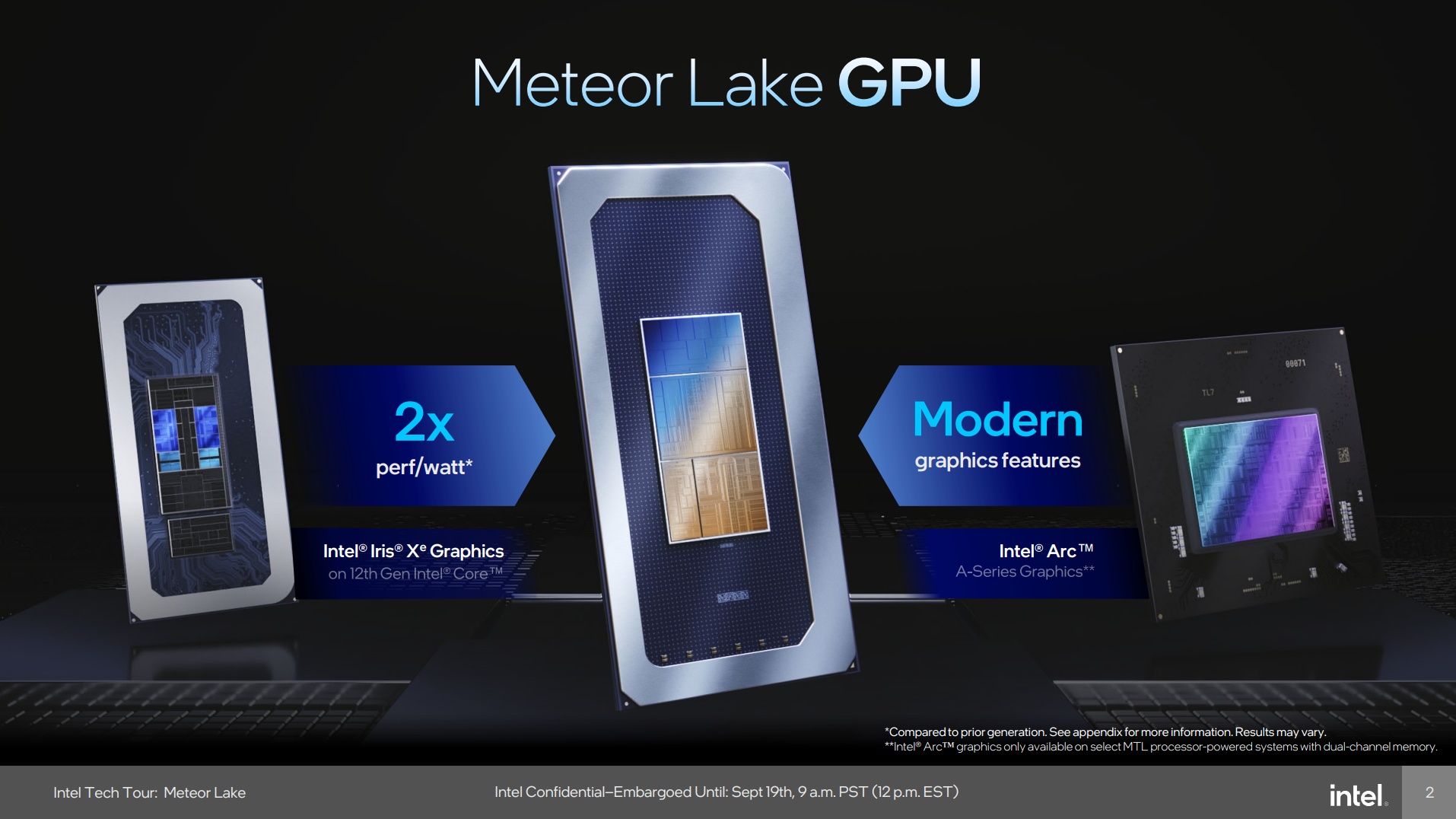
Everything will be built smaller and tighter
In addition, the components of the Intel CPUs will be even smaller. This is because Meteor Lake is said to be the first CPU generation to be manufactured using the Intel 4 process.
The process, which is based on EUV lithography, is said to enable energy savings of up to 20 percent compared to the previous Intel 7 process.
Also new: so-called chiplets – i.e. smaller subchips. Instead of placing all components of the CPU on a single chip, it is now subdivided – into CPU, GPU, I/O and SoC. This is a procedure that has been known from the smartphone sector for a long time.
Each area is specialized for certain tasks, which – according to the theory – can be processed much faster and more efficiently.
In addition, a technology called Foveros is used from Meteor Lake onwards. This is a way of stacking these chiplets on top of each other.
Several specialized logic chips, such as CPU or GPU, are put on top of a base chip for this. The end result: more chip in the same area.
Now there are already three different cores
2021 Intel had installed two different cores for the first time with the 12th generation of its processors. The large P-cores took over the heavier tasks, while the small E-cores solved less demanding tasks particularly efficiently. Intel has kept this model until now.
Of course, there is an upgrade for the cores. The new versions Redwood Cove (P cores) and Crestmont (E cores) are installed for the first time in the upcoming processors.
However, Meteor Lake adds a third type of cores. Intel calls them low power E-cores. They are supposed to need even less energy than the normal E-cores and thus solve particularly small tasks even more efficiently. The playback of videos is mentioned as an example.
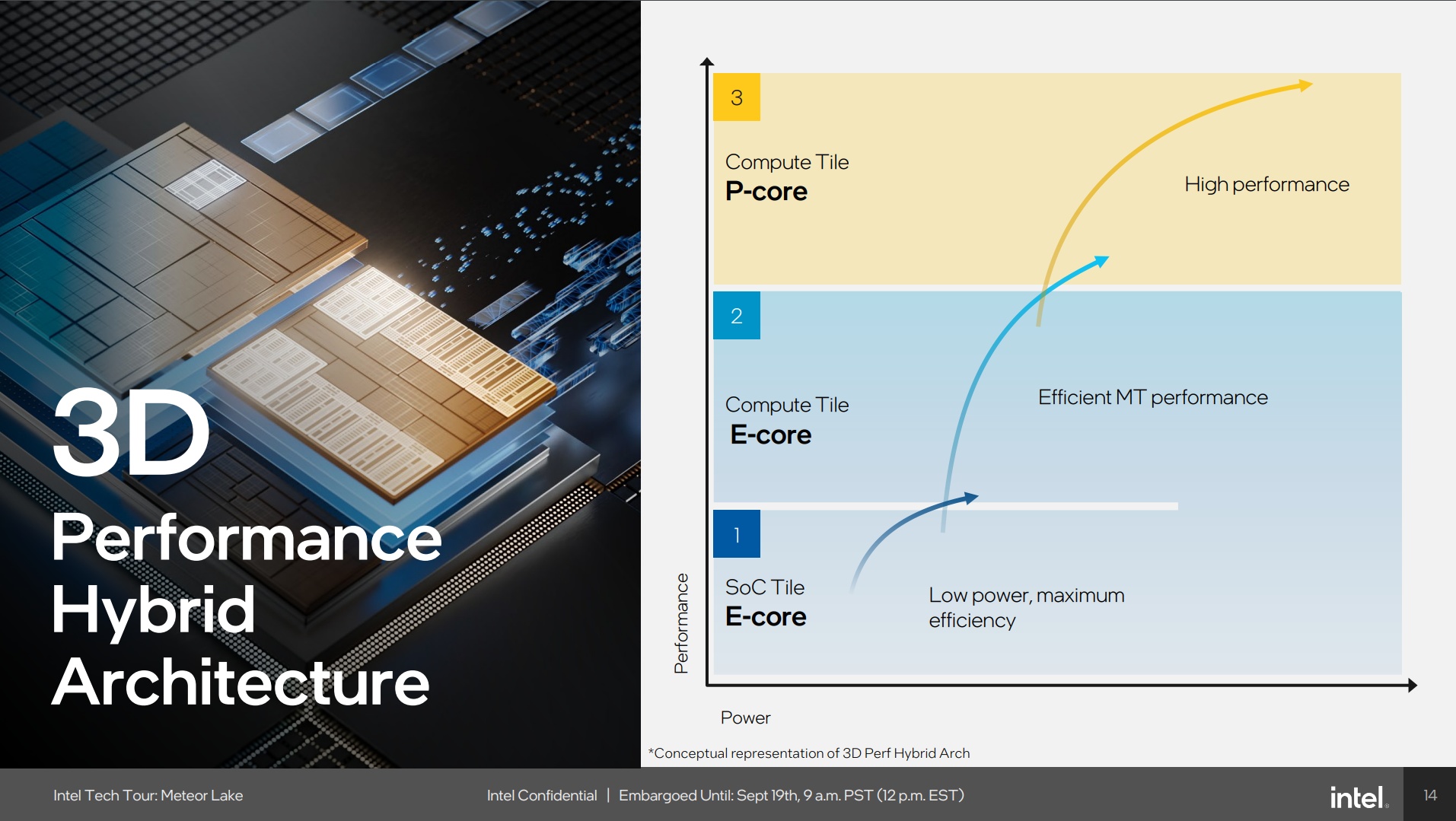
Housed not with the other cores on the CPU, the new Low Power E cores are located in a separate area of the processor called the SoC Tile.
And there you can also find another major innovation from Meteor Lake …
Brand new: the NPU
In addition to the well-known CPU and GPU components, the processors are to get a completely new component: the NPU.
The NPU (Neural Processing Unit) is a dedicated area for AI tasks such as transcribing texts, running speech AIs locally, and more.
The NPU is said to shine especially in AI tasks that take longer, while smaller tasks can be handed off to the CPU and 3D and rendering tasks to the GPU.
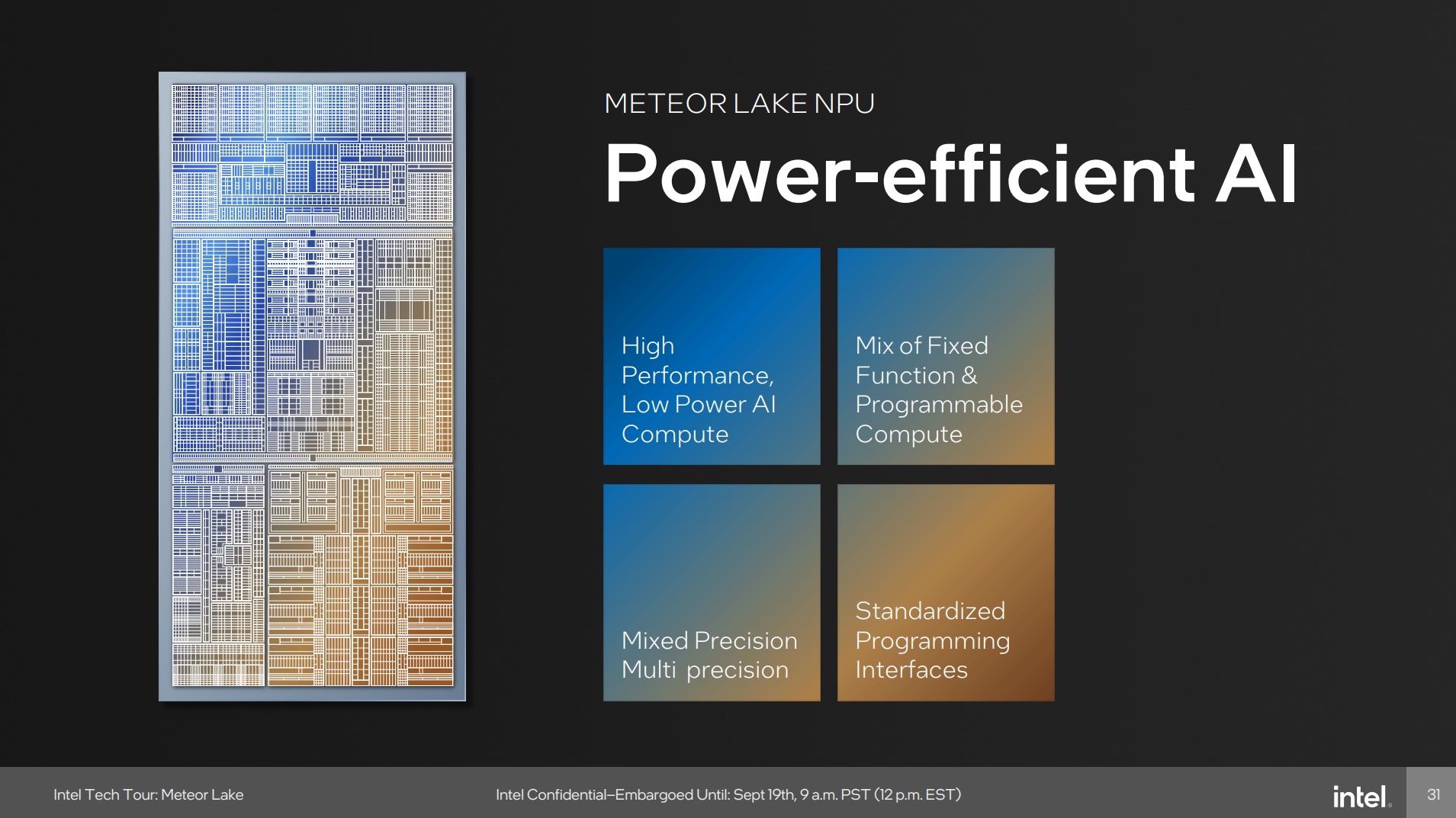
Meteor Lake: The thing with the new names explained
Intel makes no secret of the fact that they think all the Meteor Lake innovations are a big deal – they are. But to really make that clear to everyone, they’re completely overturning the previously known naming scheme for processors.
Till now, Intel named its processors according to the following scheme:
- Core i + performance class (3, 5, 7, 9) + number consisting of generation, exact model + suffix to draw attention to special features.
Small example: The Core i9-13900H is a top 13th generation model and, as the H at the end reveals, a powerful notebook processor.
The new scheme, on the other hand, looks like this:
- Core + power class + optional
Ultra
for especially strong processors + exact model
So the new top model and counterpart to our example above is now called Core 9 Ultra 1900H.
And to really make the point, Intel is also starting with the 1st generation again with the new naming scheme.
What do you guys think? Do all the changes justify Intel’s statement that this is the biggest change in 40 years – and the new naming scheme that comes with it? Would you have liked a more concise naming scheme? And what do you think about the fact that there wasn’t much new to see in terms of end-user hardware besides laptop CPUs? Feel free to write it in the comments!

